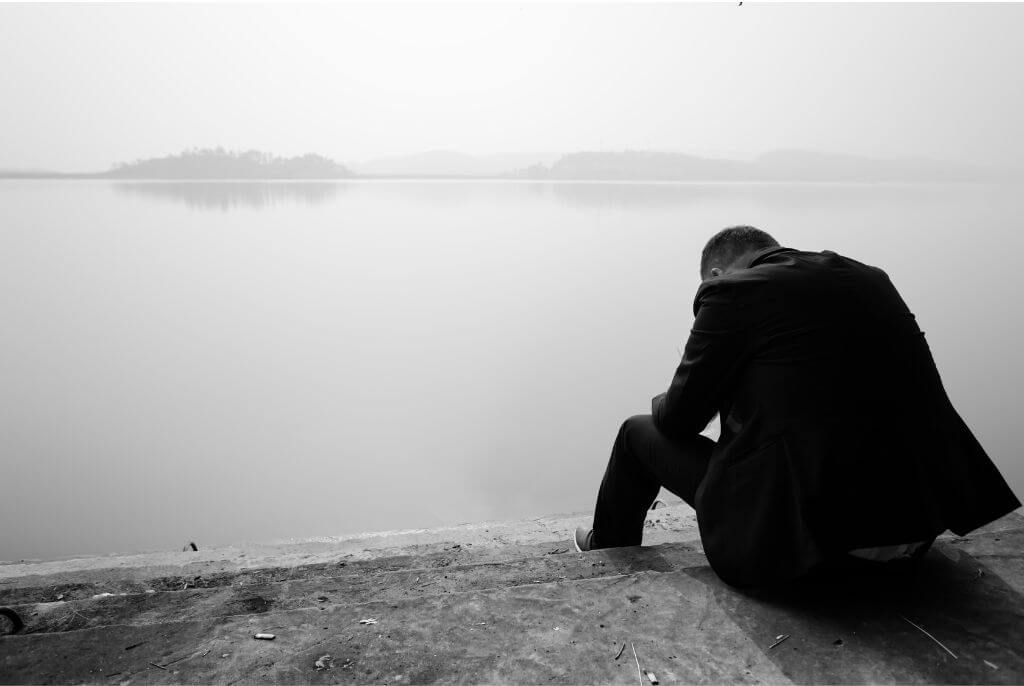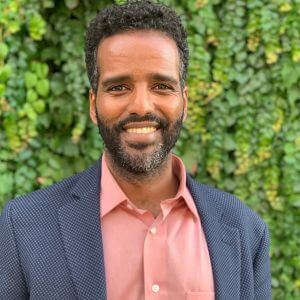As an introvert, I enjoy many advantages, including having deep conversations, being a good listener, enjoying my alone time, and having an independent problem-solving mindset. However, being able to connect with others was not always a strength. Part of the reason was that I wore an invisible mask – a mask to hide my insecurities and discomfort.
The Mind of A Perfectionist

Growing up, I was always a perfectionist and a people-pleaser. I made sure I never made a mistake in front of people. I had to look the part in order to blend in with different groups. If I didn’t do that, then I would see myself as a failure. The possibility of not meeting the expectations that I thought others had of me, and being rejected, was terrifying.
Sounds silly as I think about it now, but this was my mindset for most of my life.
It all started back in second grade back in Zimbabwe. I was one of the only chubby kids at school. I stuck out from other kids like a sore thumb and was always the target for other kids’ teasing.
I even remember one teacher in my second grade calling me a “fat, useless boy” after I made a mistake on my homework. I still remember how painful her words were at that time. The continuous bullying made me distance myself from others. I stayed in the background during group settings or activities. I developed a habit of avoiding standing out as I went about my life. My goal was to blend in and be like everyone else. To wear an invisible mask and hide my true self.
This is how I went about life for a long time, since in my head I associated standing out with pain. I tried my best to fit in any way that I could. I used this strategy when I moved to the U.S. back in 2005. I also did this when I started my first job in corporate America a few years later. I dressed and acted like everyone else. This is not bad in itself but can be dangerous if you don’t know yourself.
All my actions were motivated by a fear-based mentality.
You will always be consistent with the identity you create for yourself. If you have empowering beliefs, you will have confidence and a healthy self-esteem. But, if you have negative or self-defeating beliefs, then you will not think highly of yourself or your abilities. I was ashamed to be myself, ashamed to be different, and with that shame came anxiety and low self-esteem.
Even years later—after I finished high school and was no longer a fat kid—I continued to carry that mindset, beliefs, and fears of that fat kid. “Do not stand out or else the pain of rejection will come my way.” This was ingrained in me as part of my belief system. After all, getting older doesn’t mean that your earlier beliefs disappear.
I bring this story up because both you and I have developed some self-limiting beliefs from our childhoods that make up our self-images. Some of these beliefs are holding you back from your greatness. It’s holding you back from doing work that means something to you.
The Passive Follower

I always preferred to be a follower in everything I did. But, as my career and business progressed, I was forced into situations where I had to be the leader of teams. As a result, it never worked out well. This was because, in the back of my mind, I still had the belief that standing out would end in rejection and pain.
Without realizing it, this thinking held me back for years. I self-sabotaged. In my career I was in constant communication with lots of people and it was exhausting trying to keep up with my different personas for each person.
The people-pleaser approach was wearing thin and getting old. It was holding me back. It no longer served me. I was stressed and always in panic mode, worrying about what others would think of me, never having the courage to speak up about my own thoughts or opinions.
Instead of stopping to reflect and make a meaningful change, I kept moving forward like a stubborn bulldozer. This only further fed into the cycle of negativity, fear, and insecurities, distancing me from making any authentic connection.
Leading With Vulnerability

Back in 2015, I watched a short video that forever changed the way I saw myself. It was a TED Talk that I happened to come across as I was browsing online. The speaker was Brene Brown and the presentation was “The Power of Vulnerability.” You might recognize her NY Times bestselling books, “Daring Greatly” and “The Gifts of Imperfection.”
In the video she shares how some of us go about life carrying the shame of not being good enough. As a result, we try to perfect ourselves in front of others and not show our vulnerability.
I immediately related to her message. Her words spoke to me, as I had never tried to be imperfect in front of anyone. I cared so much about what others thought of me and never realized that it’s okay not to be perfect. After all, if you’re perfect, why would anyone want to be around you? You remind them of how imperfect they are. How can anyone relate to you? How can anyone connect with you at any level without some common ground?
The power of vulnerability was such an eye-opener and a shock, because I never saw my imperfections that way. I began to reflect on this new realization and awareness.
That day when I watched the video I remember sitting back on my chair and reflecting on everything that happened to me in the past. How I never understood why things turned out the way they did. Why interactions with strangers, friends, and family always hit an invisible wall. I always could feel something was wrong, but I could never put my finger on it.
I took it as “I’m not good enough,” or “I’m not perfect enough.” I had stopped allowing myself to open up to others, and in response, it was hard for others to open up to me.
Now as I look back, everything makes sense. I began to put the puzzle together of past conversations and events that never made sense at that time, but now it hit me. I understood why things happened as they did. I was relieved, sad, hurt, and disappointed as I thought back to situations or relationships that could have been so different (better) if I knew all this back then.
What Helped Me Connect with Others and with Myself

After that TED Talk video, I began to challenge myself to:
- Trust my gut for decisions and in return feel more connected with myself.
- Be vulnerable and open up more to people. This in turn helped others feel more at ease with me.
- Share my honest opinions and thoughts, even when it might make me stand out.
- Set boundaries and say no to requests that I couldn’t meet or didn’t want to do, even when it’s uncomfortable.
When I began to love, respect, and connect with myself, it made it easier to be more present with others. Being able to connect with others was easier.
I started to get out of my head and connect with my heart. Work was more enjoyable. Networking was less intimidating.
The lesson I learned is that connecting with your introverted self is what’s going to allow you to make more authentic connections with others.
From time to time, those old insecurities do come knocking at my door again. It’s tempting to go back to my old ways. So I still have to continuously challenge myself to come out of my shell (or take off the mask).
I encourage you to do the same. It’s scary to get vulnerable, come face to face with ourselves, put ourselves out there, and drop the mask. But the rewards are more than worth it.
To learn more about Petros’ journey, and to discover strategies for breaking through your own barriers, check out his excellent book, The Introvert Immigrant’s Journey.





